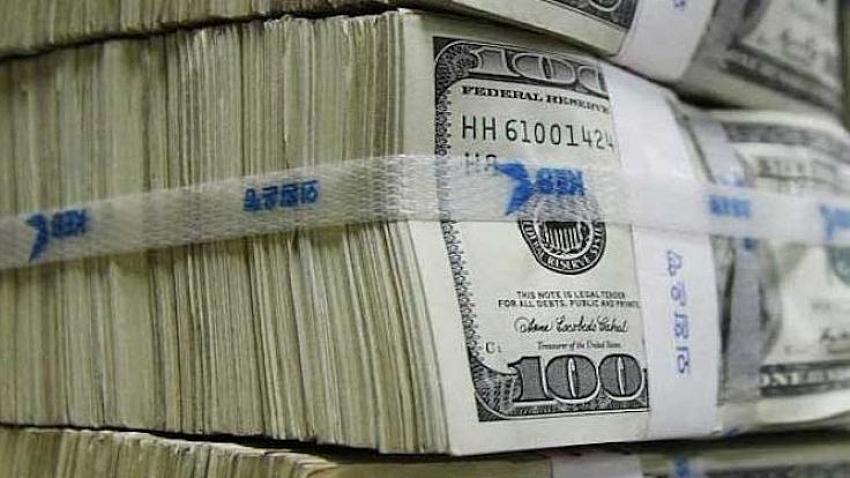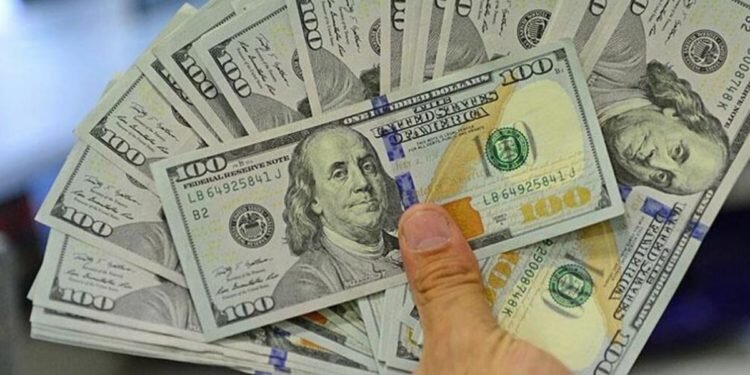Since this week, the wall, which has not been able to be crossed in dollars / TL for 4.5 months, has exceeded the limit of 15 lire. Most recently, the dollar/TL surpassed 18.3 lira in December 2021, followed by the measures, especially the currency-hedged TL deposits, and continued below 15 lira this year. However, foreign influences, high inflation and increasing demand for foreign exchange seem to have pushed the exchange rate higher again.
According to World’s Şebnem Turhan news, market experts often repeat that public banks and the central bank try to compensate by selling foreign exchange on high-demand days throughout the year, but there is no official statement on how much sales are no longer being made . Here, economist Haluk Bürümcekçi tracks the reserve meltdown that began in March 2019, reaching as high as $128 billion, and lays out the changes made this year with data. According to Bürümcekçi’s calculations, around 24 billion dollars were sold for intervention purposes in the first quarter of this year.

Bürümcekçi pointed out that the figures reflect that although a significant part of foreign exchange flows have been channeled to the central bank in recent months, they have failed to achieve consistent overall and net reserve accumulation, stressing that there has been no improvement in the property status of the reserves. Bürümcekçi answered Dünya’s questions and explained in detail how he performed the calculation. Bürümcekçi, who made calculations for the international net reserve as defined by the IMF, explained that foreign exchange inflows were injected into the reserves, in particular rediscount lending, currency conversion into currency-hedged deposits and the achievement of a certain percentage of export earnings, and explained that the expenditures were sales to SEEs, swaps and treasury transactions. By April 18, 25 percent of export prices had to be sold to the central bank. On April 18, both service exporters were added to the scheme and the rate increased to 40 percent.

EXPORT REVENUE EXCLUDED SHOULD INCREASE TO $17.1 BILLION
According to Bürümcekçi’s calculations, in the first quarter rediscount loans contributed $4.9 billion to reserves. The amount of return from foreign currency in KKM is approximately $28.6 billion. While $12.8 billion worth of foreign exchange was sold to state-owned companies, there was a $2.4 billion drop in swaps and a $1.2 billion drop in Treasury Department transactions. Excluding 25 percent of export prices, net international reserves should have increased by $17.1 billion in the first quarter. However, according to official figures, the increase amounted to $7.8 billion. That’s a $9.3 billion lower increase. Bürümcekçi stressed that adding the monthly export value of about $5 billion, the increase should be about $32.1 billion, which means it creates a difference of $24.3 billion.

The account tells us that about $24.3 billion in reserves are used by public banks or the central bank to intervene in the foreign exchange markets. Bürümcekçi also pointed out that there can be errors in the calculations, as many data are not disclosed transparently. Bürümcekçi explained that on high demand days, sales were made to meet the demand and stressed that the level in dollar/TL would have been much higher if this had not been done.
Why are we discussing central bank reserves so much? Bürümcekçi noted that it is necessary to look at interest rates, exchange rates and capital movements on three legs, and that it is possible to control the interest rate by determining interest rates correctly when all are free. Bürümcekci said: “However, they are trying to anchor interest in Turkey, it is not free. If you say you’re going to keep interest, you have to play with the other two, the exchange rate and capital movements. Capital control never fully materialised, but first you stopped international swaps, I think KKM is that kind of thing. Because you stop converting TL to foreign currency and while it still exists as a currency risk, it presents it as if it is not a foreign currency deposit on paper. So there is no outflow of capital. You can hold exchange rates with intervention, and this is where the importance of reserves comes into play. We can measure how much power the central bank has and how much it can sell with reserves. It is of great importance to show the intervention power of the reserve.”

THE maintenance of the policy is conditional
Economist Haluk Bürümcekçi explained that there is a very high negative real interest rate and that KKM is trying to solve this situation, but this is not a guarantee. Burumcekci,In order for the FX selling policy to continue, the incoming must be good and the outgoing must not exceed it. So it’s simple math,” he said. Bürümcekçi stated that some data should be tracked for sustainability and prioritized the current account balance. Bürümcekçi said: “The current account balance is going up. The increase in natural gas and oil prices is having an effect. Natural gas may provide some relief in the off-season, but winter is coming again. Of course there are things that go well. Export, tourism side is doing well. But right now the balance of payments deficit is worsening. Energy aside, the external balance sheet isn’t that bad, but there is such a truth. The second is foreign outlets. It’s not a problem because it’s decreased so much that the foreigner doesn’t have a proper position. No pressure here. Third, household demand. KKM holds it, it works, it delays FX demand. But KKM has reached a certain size. If there are no new returns from DTH, it means no new foreign currency is entered into the system from here. you have to watch After all, we don’t know how big the monetization will be. Where will the credit pumps go? The central bank will also lend. All of this will show whether the lifespan of this policy will be lengthened or shortened.”

WITHOUT THIS GUIDELINE THE PRICE WOULD NOT HAVE 18 HIT
Bürümcekçi reminded that the central bank has much stronger reserves and has spent a lot in recent years, Bürümcekçi said: “It was spent a lot and in the end it exploded. If you hadn’t done that, it might not have cost $18/TL, but you would have gotten 18. He has come to a place where he will never be. Well, it should normally be enough in real exchange rates, but it’s forcing it because inflation is so high. It would be much harder to keep it dry without correcting for inflation. I can’t say anything about the timing of the system, but that’s not sustainable. However, there are things that can extend its lifespan. The sudden appearance of KKM changed the game. Now the inflation-linked bond may last a while longer. And it will save time. If the Russia-Ukraine crisis had not occurred, it would have been much easier to sustain. We don’t know now, maybe it could be a good shock.” he said.

THE RESERVES ARE ALSO WITH LIABILITIES IN THE NEGATIVE ZONE
Economist Haluk Bürümcekçi said that with the central bank’s sales that began in 2019, reserves have also turned negative. “When we say negative, we mean borrowed currency that he doesn’t own. Of course it doesn’t look tiny. Total reserves consist of gold and foreign exchange reserves. Total foreign exchange reserves appear to be $69 billion, of which approximately $11.2 billion are Treasury Department foreign currency deposits. The portion of which $67.2 billion is held by banks within the required foreign exchange reserves consists of swap transactions with banks and central banks announced at $63.7 billion in the latest data. Therefore, we see that the Treasury’s foreign exchange deposits, for which the bank does not have its own foreign exchange reserves, are negative $57.3 billion even if we do not reduce them, and even if the gold reserves are added, the CBRT property in the property remains negative Zone at minus $27.2 billion.” Meanwhile, Bürümcekçi explained that foreign exchange sales stopped when Naci Ağbal became head of the central bank and Şahap Kavcıoğlu did not resort to this method until interest rates were cut.
Similar news
#Turns #central #bank #sold #hold #dollar
No comments:
Post a Comment